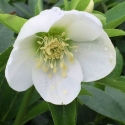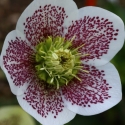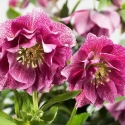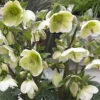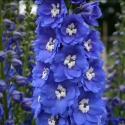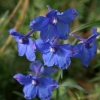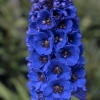Thursday 24th August, 2017
Hi
The basics with a little tweek can make all the difference...
Sometimes its the little things that you do that can really up the ante on a regular meal. I had been checking out whats happening on a facebook page and it was here that I spied a different Kumara mash recipe. We have been having
Kumara mash lately instead of mashed potatoes. Now its not really a recipe as such but just another take and instead of boiling the Kumara, you roast them off in the the oven with a little olive oil. Of course I used our Tarragon infused olive oil for some extra flavours going on. Once the Kumara are really soft and delicious mash them with some coconut cream, add salt and pepper to taste and then add a handful of chopped coriander.
We decided that night to use up the leeks, that were lurking in the fridge, in a cheese sauce so I sliced them up and blanched them in boiling water. Decided that there wasn't enough leeks so blanched some broccoli, that was there as well, and then drained them all off really well and put them in an oven dish.
Melted some butter to make a roux but at this point, I added some cumin seeds and sauteed them for a moment before adding the flour, which adds quite a nice flavour to the finished sauce. Then its carry on as usual, flour, milk and cook to a thick sauce consistency add grated cheese, salt and pepper to taste and pour over the leeks. Top the dish of with more grated cheese and cook in the oven until the top is golden brown.
The Kumara mash and leeks were great with some sausages which all made for quite a simple tasty evening meal after work.
Smart phones take fabulous pics
Spring is in the air and the Magnolias are singing all the praises at the moment.
Denudata is just breath taking right now and if you click on the link you can see for yourselves the one in full flower in our garden right now. If you are keen on taking pics on your smart phone, then spring is a good time to get snapping away... you can never take too many. There are a few more pics of magnolias that I have taken by getting up close and personal and don't forget that there are many phases of the flowers, from the buds, to perfect flower and then the final stages of the bloom
Magnolias are pollinated by insects and you will often find many little bugs crawling around inside those regal looking tulips if you are trying to capture a glimpse of inside.
While on the subject of Magnolias I found a new one to add to our huge range of these magnificent trees called Limelight. Limelight as its name suggests is soft lemon yellow. I am guessing here but the Koban dori is the yellow species and has probably lent its genes to the other yellows magnolias that are available. A quick google at this point also suggests that the Magnolia acuminata has small lemon yellow flowers and whose genes are also in the yellow hybrids.
The yellow magnolias are a bit different as we mostly expect Magnolias to be be the classic pinks and whites. You can cruise through all the Magnolias here but check out the yellow shaded ones for something collectible to add to the garden .
Sundance,
Yellow Bird,
Hot Flash,
Butterflies, Brooklyensis,
Honey Tulip as well as the new one to us
Limelight.
If you planted many different ones then you would have a very extended flowering season, for example Vulcan started ages ago in our garden and then Denudata (flowering without leaves) is going for it now. Gere is another pure white like Denudata and is just coming into bloom right now. I am still waiting on Iolanthe in the Nursery to start to flower which always looks amazing and then the dark yellow that we have will be one of the last.
OMG we have been so lucky but out of the blue we got offered some Helleborus
Ice Queen.. the one that has pure white single flowers. I know that Harry has his eye on some of these for our garden as he wants an area of all white winter roses. That means we will be shifting out all the one that have flowered pink to a pink area and replacing them with these. I imagine that these wont last long so be in quick. We were also luck enough to get a large quantity of
double hybrids. The double winter roses are really cool with their fuller flowers but they are mixed shades so unless you get them in flower the colour will be a surprise.
We have the biggest range of helleborus (winter roses ) right now. White Tutu and Tutu Ballet are both really nice hybrids and there are many more hybrids and species to select from.
Give some thought to...
Philadelphus or mock orange as many will know this plant is a highly scented, prolific flowerer that makes a gorgeous specimen shrub or can be used to create a wonderfully fragrant, deciduous hedge ranging in height from 1.5m to 3m depending on the variety.
Spiraea will delight with their wonderful mass display each spring, available in pinks and whites. Hardy, and good for full sun or part shade.
4 varieties currently available.
Peonies are still available in good numbers with lots of colour variety to choose from. Remember we deliver throughout New Zealand and can get these to you in the cooler regions that they enjoy.
Codling moth traps need to be in the trees now so if you haven't got one in your apple trees then don't wait, if you do have yours in the tree already and it's been there a while then dont' forget to refil as the hormone doesn't last all season.
Seasol is a complete plant health product and Power feed is a liquid organic soil fertilser and conditioner. Both are amazing products to help look after all your plants. Dilute seasol in water and use on all plants in all situations, perfect as a soak or water over the leaves as many plants will take up minute amounts of nutrients through the leaves. Water in pots and new plants as a healthy start and help reduce transplant shock.
PowerFeed contains macro nutrients and fish that are a rich source of proteins, beneficial bacteria and trace elements. The liquid composts in PowerFeed stimulate soil microbial activity, boost soil structure and increase nutrient availability. This helps turn sticky, clay soils into friable soils and can significantly reduce leaching in sandy soils.
Use powerfeed in the vegetable garden as a regular liquid feed and help condition the soil
The secret with all liquid feeds is to use on a regular basis so that trhe nutrients are always available . The more you feed and look after your garden the better the results will always be.
Both Seasol and Powerfeed can be used on plants that requrie a low phospherous fert like grevillias, proteas and leucadendrons and most other Aussie natives.
Delphiniums are available now so you can get them in for the spring flowering season. Below is a selection of the gorgeous blues available but we have them in stunning pinks, purples and whites too.
Iris bearded, Large flower Hybrid Clematis
We have an amazing collection of large flowering clematis and Iris plants that are available through our online only page. You can access these plants by going to
www.wairere.co.nz/over and above. We are not currently intending to hold these plants in stock so they are pre order only. Just select the ones you want and make sure you scroll to the bottom of the page to fill in your details. We will put a link on the main website soon to access this page but in the meantime make sure you add it to your favorites bar so you can continue to access it easily. PLants will be added and removed as availability changes.
I hope that you are all making the most of this glorious weather. I reckon we'll appreciate these nice days so much more as they have been pretty thin on the ground of late. If you are in the garden making changes then dont be tempted to move plants at this stage of the season as the sap is well and truly on the run. For example don't shift any roses that have started to busrt into leaf as they will almost certainly collapse and die. Once the spring rush is over and the first flowering has finished then you will have a much higher sucess rate.
If you have new seasons
trees or
shrubs to plant then take care with these as well as they will almost be certain to be making lots of new white feeder roots. Dig all your holes first and be ready prior to taking the plant out of its pot or bag. Take your new plant out of its container carefully by cutting bags or squeezing container so that you dont damage the new feeder roots. New seasons trees that are in this more delicate transitional stage need to be planted carefully so as not to break all the new roots. Dont forget to plant to the same soil height that the plant was in, in its container unless its obvious that it has been previously in the soil to a different level. Stake securely so the plant doesnt rock in the wind and then water in to put all the soils fines back next to all the roots using water or better with a
Seasol brew.
All your garden will enjoy being fed at this time of year so that it can put all its energy into the huge growth phase that is going on.
Instant or
inorganic fertilsers will provide immediate nutrients with the next rain and
organic ones like
biobost,
sheep pellets,
Blood and Bone and
compost will release nutrients over time as they break down.
Spring is such a beautiul time of year, take the time to enjoy the season, the slowly lengthening days, the warmer temperatures and mostly the sun that seems to bring out the best in us all!
Have a awesome weekend and enjoy the sun.
Cheers Lloyd, Harry and the Wairere Team
Make it a Wairere weekend where even GNOMES know that gardening's not a drag.










